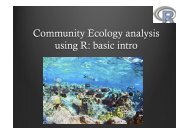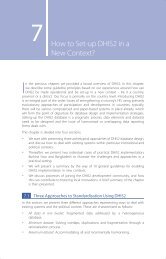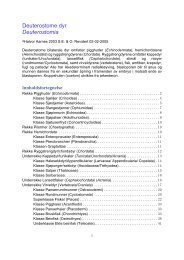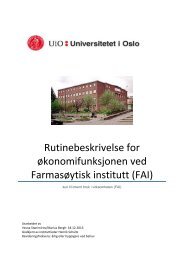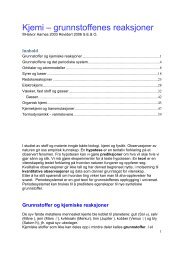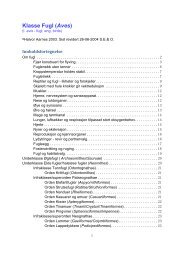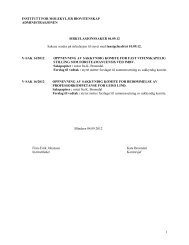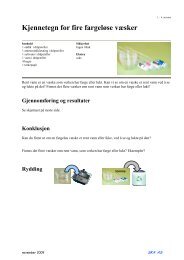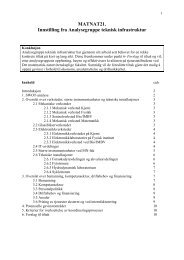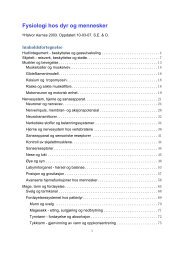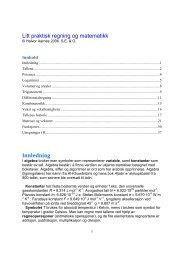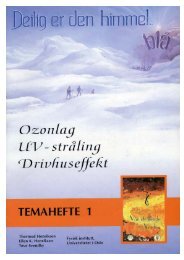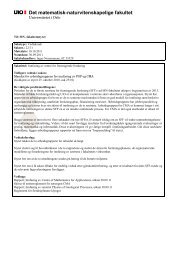Evaluation of individual research units - Norges forskningsråd
Evaluation of individual research units - Norges forskningsråd
Evaluation of individual research units - Norges forskningsråd
You also want an ePaper? Increase the reach of your titles
YUMPU automatically turns print PDFs into web optimized ePapers that Google loves.
<strong>Evaluation</strong> <strong>of</strong> biology, medicine and health <strong>research</strong> in Norway (2011)<br />
Norwegian University <strong>of</strong> Life Sciences<br />
(UMB)<br />
Department <strong>of</strong> Plant & Environmental Sciences<br />
Description <strong>of</strong> institution<br />
The department (Institutt for plante-og miljøvitenskap, IPM) was formed in 2005 after the<br />
merger <strong>of</strong> two departments <strong>of</strong> the former Agricultural University <strong>of</strong> Norway (NLH), Soil<br />
& Water Sciences and Plant Sciences, and plant physiologists and geneticists from two<br />
other departments. IPM is the largest department at UMB. Its 175 employees are<br />
organised into seven scientific sections, each led by a group leader. IPM has 14<br />
administrative staff, including the head <strong>of</strong> administration, who serve all scientific<br />
sections. Staff members have competencies in many areas and are performing <strong>research</strong><br />
and teaching in life sciences and their practical application, plant production, use <strong>of</strong><br />
natural resources, climate change and renewable energy, food production, and food<br />
safety. The department has strong national and international collaborations.<br />
General evaluation & recommendations<br />
In general the department seems strong and dynamic, with a good organisational<br />
structure. Reducing the number <strong>of</strong> geographical locations where staff are based might<br />
result in stronger <strong>research</strong> groups and infrastructure. The department produces a high<br />
number <strong>of</strong> <strong>research</strong> papers each year, although relatively few <strong>of</strong> the papers are published<br />
in high-impact journals. The unit relies on external funding to pay the salaries <strong>of</strong><br />
permanent staff. According to the self-assessment, four <strong>of</strong> the seven <strong>research</strong> sections are<br />
strong (Soil Science, Plant Genetics and Plant Biology, Plant Production, and<br />
Environmental Chemistry); the department might consider whether to retain all seven. A<br />
new appointment in limnology may strengthen that group. The decline in the number <strong>of</strong><br />
undergraduate students may result in a decrease in government funding. If feasible, the<br />
department might secure funds to assist groups with short-term financial needs. The age<br />
balance <strong>of</strong> staff is poor in some areas. The department might investigate the potential for<br />
a stronger interaction with Oslo University in order to share the teaching load. We<br />
suggest investigating the possibility <strong>of</strong> establishing a National Plant Science Programme.<br />
The department might establish a strategic long-term <strong>research</strong> plan if one does not already<br />
exist.<br />
Follow up <strong>of</strong> previous evaluation<br />
The department has established strong national and international collaborations and the<br />
<strong>research</strong> output in ISI-rated journals has increased. Smaller groups have merged into<br />
larger and more productive <strong>units</strong>.<br />
19




